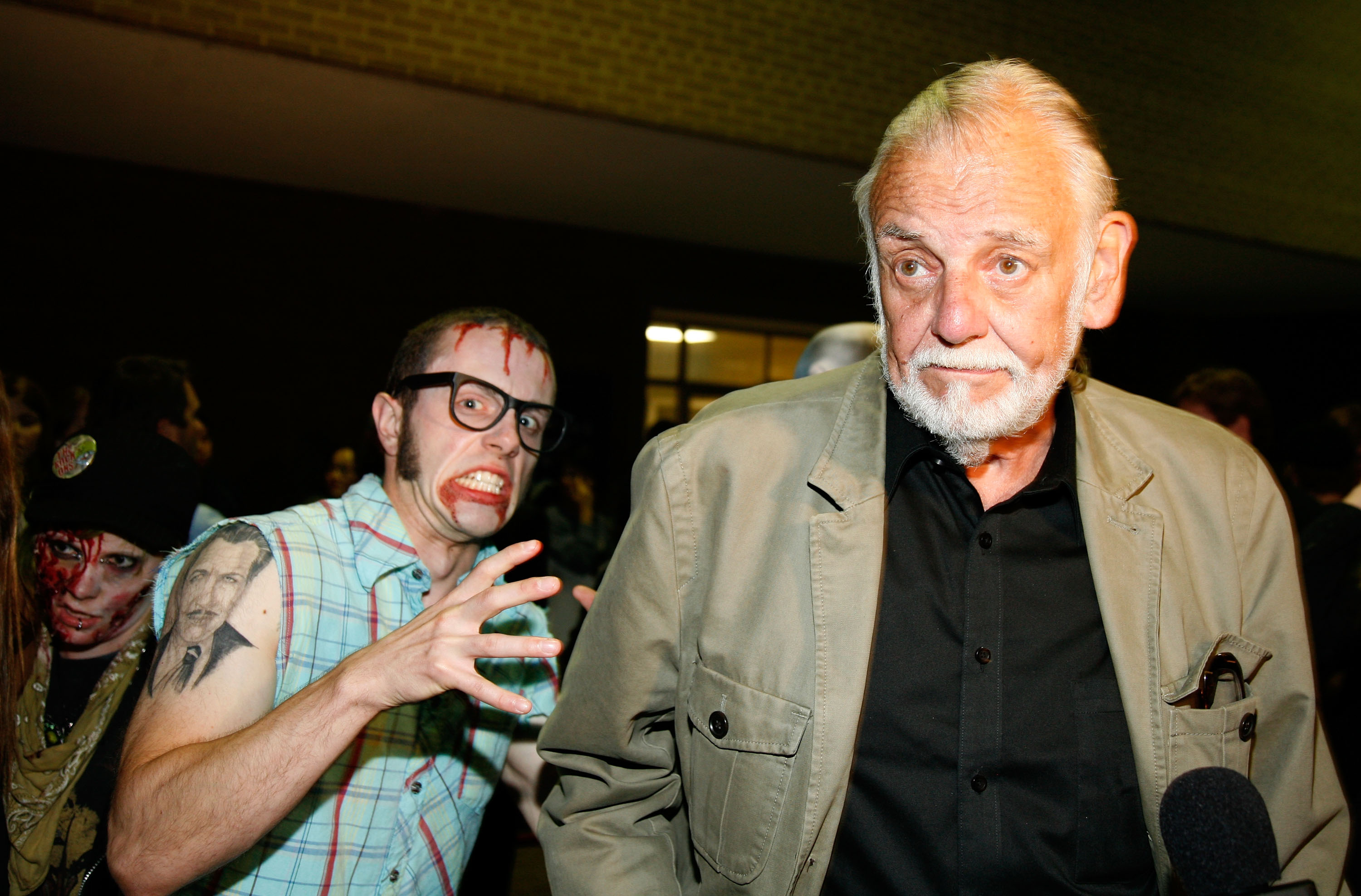Legendary horror director, zombie progenitor George A. Romero is dead at 77


In 1968, George A. Romero made Night of the Living Dead on a shoestring budget of $114,000. It earned $30 million at the box office, launched the modern zombie genre, and set the rules about the animated undead that writers and directors still abide by 50 years later. Romero, who followed it up with several more Dead movies and other films in various genres, died in his sleep on Sunday in Toronto after a brief battle with aggressive lung cancer, his manager, Chris Roe, said Sunday night. He was 77 and surrounded by his wife, Suzanne Desrocher, and daughter, Tina Romero, listening to the score of The Quiet Man, a favorite film.
Night of the Living Dead didn't use the word "zombie," previously depicted as a living person enchanted through voodoo, but it set the ground rules for the zombie genre: Slow-moving undead flesh-eaters whose bite kills and infects its victims, turning them into zombies. Romero's most successful follow-up was Dawn of the Dead (1978), and after the 1985 commercial and critical flop Day of the Dead, he retired the franchise until 2005, when he released the star-packed Land of the Dead.
Romero's zombies were always social or political commentary, stand-ins for perceived political or societal ills, including racism, conformity, materialism and mall culture, and class warfare. "The zombies, they could be anything," Romero told The Associated Press in 2008. "They could be an avalanche, they could be a hurricane. It's a disaster out there. The stories are about how people fail to respond in the proper way. They fail to address it." People would say, "You're trapped in this genre — you're a horror guy," he added, but he disagreed. "I say, 'Wait a minute, I'm able to say exactly what I think.' ... I'm able to talk about, comment about, take snapshots of what's going on at the time. I don't feel trapped. I feel this is my way of being able to express myself."
The Week
Escape your echo chamber. Get the facts behind the news, plus analysis from multiple perspectives.

Sign up for The Week's Free Newsletters
From our morning news briefing to a weekly Good News Newsletter, get the best of The Week delivered directly to your inbox.
From our morning news briefing to a weekly Good News Newsletter, get the best of The Week delivered directly to your inbox.
Romero was born in the Bronx in 1940, and was always a fan of film. He graduated from Carnegie Mellon in Pittsburgh in 1960 and learned his trade working on movie sets and on Pittsburgh-based Mister Rogers' Neighborhood. Nobody took his first zombie movie seriously, but now "people write their thesis about it," he told USA Today in 2010. "I don't think it deserves half of the treatises about it." You can watch the trailer for Romero's 1968 cult classic below. Peter Weber
A free daily email with the biggest news stories of the day – and the best features from TheWeek.com
Peter has worked as a news and culture writer and editor at The Week since the site's launch in 2008. He covers politics, world affairs, religion and cultural currents. His journalism career began as a copy editor at a financial newswire and has included editorial positions at The New York Times Magazine, Facts on File, and Oregon State University.
-
 TikTok secures deal to remain in US
TikTok secures deal to remain in USSpeed Read ByteDance will form a US version of the popular video-sharing platform
-
 Unemployment rate ticks up amid fall job losses
Unemployment rate ticks up amid fall job lossesSpeed Read Data released by the Commerce Department indicates ‘one of the weakest American labor markets in years’
-
 US mints final penny after 232-year run
US mints final penny after 232-year runSpeed Read Production of the one-cent coin has ended
-
 Warner Bros. explores sale amid Paramount bids
Warner Bros. explores sale amid Paramount bidsSpeed Read The media giant, home to HBO and DC Studios, has received interest from multiple buying parties
-
 Gold tops $4K per ounce, signaling financial unease
Gold tops $4K per ounce, signaling financial uneaseSpeed Read Investors are worried about President Donald Trump’s trade war
-
 Electronic Arts to go private in record $55B deal
Electronic Arts to go private in record $55B dealspeed read The video game giant is behind ‘The Sims’ and ‘Madden NFL’
-
 New York court tosses Trump's $500M fraud fine
New York court tosses Trump's $500M fraud fineSpeed Read A divided appeals court threw out a hefty penalty against President Trump for fraudulently inflating his wealth
-
 Trump said to seek government stake in Intel
Trump said to seek government stake in IntelSpeed Read The president and Intel CEO Lip-Bu Tan reportedly discussed the proposal at a recent meeting



